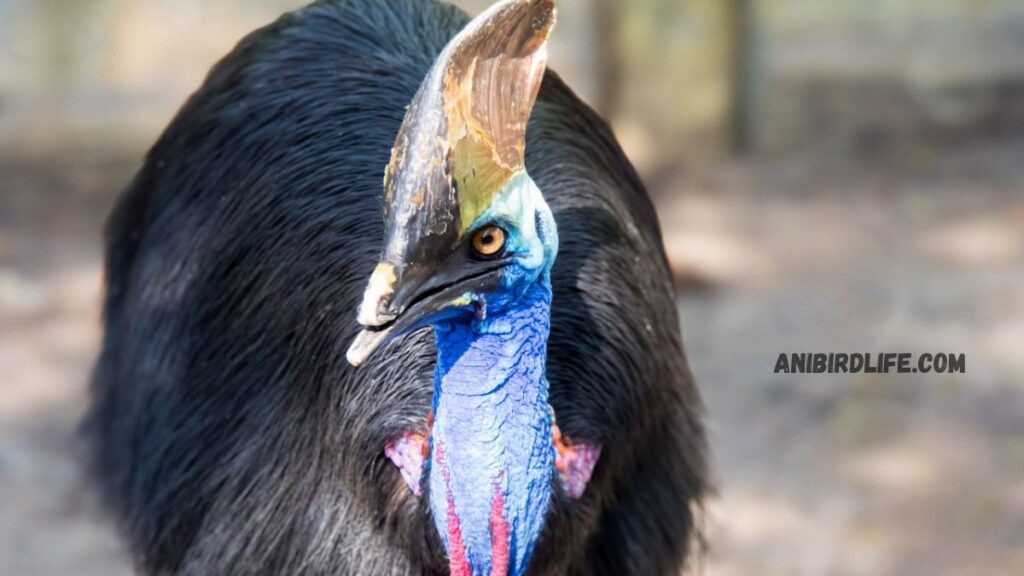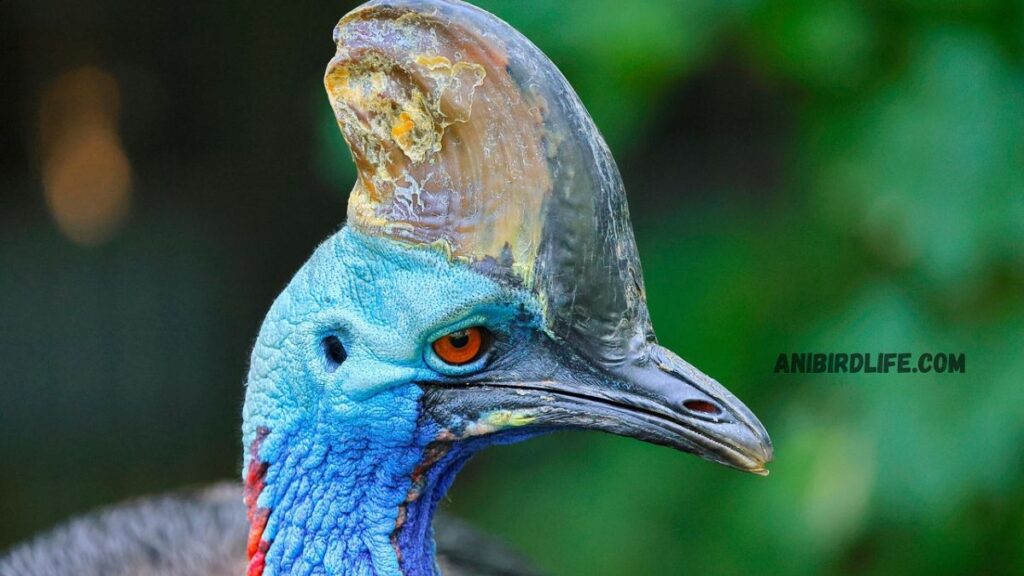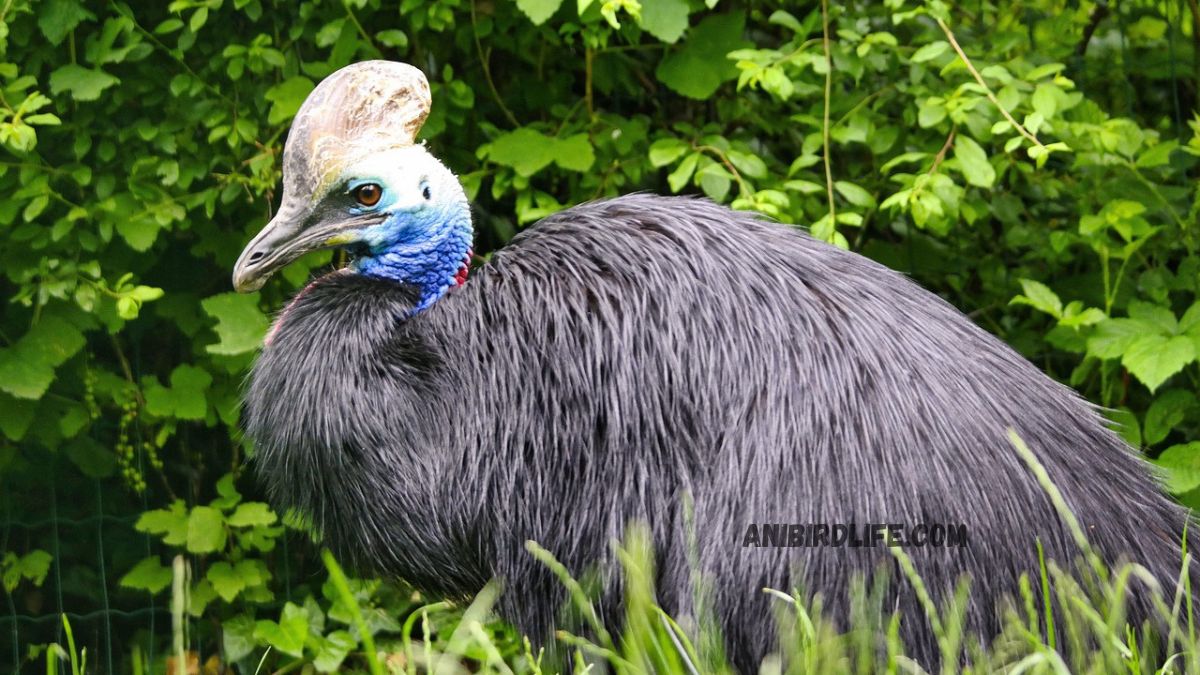One of the world’s most fascinating and mysterious birds is the Southern Cassowary (Casuarius casuarius). This flightless bird, a veritable wonder of nature, is well-known for its remarkable appearance, ancient ancestry, and crucial ecological role. The Southern Cassowary, which may be found in the rainforests of Australia and New Guinea, is a species that requires immediate conservation efforts in addition to being a symbol of biodiversity.
This essay will examine the intriguing Southern Cassowary, including its distinctive features, ecological significance, and contemporary concerns.
The Southern Cassowary: What is it?
The ratite family, which also contains kiwis, ostriches, and emus, includes the huge, flightless Southern Cassowary. With a maximum height of 1.8 meters (6 feet) and a maximum weight of 60 kilograms (132 pounds), it is the third tallest and second heaviest bird in the world. Its bright blue neck skin, vivid red wattles, and helmet-like casque on its head are its most distinguishing characteristics.
There are three species of cassowaries: the Northern Cassowary (Casuarius unappendiculatus), the Dwarf Cassowary (Casuarius bennetti), and the Southern Cassowary. Because of its greater size and significant contribution to the ecosystems it lives in, the Southern Cassowary is the most well-known and extensively researched of these.
Distribution and Habitat
The lowland forests of New Guinea and the tropical rainforests of northeastern Australia, especially Queensland, are home to the Southern Cassowary. These birds may feed for fruits, fungus, and small animals in dense, damp settings. In addition to being fiercely protective of their territories, they are essential to the wellbeing of their ecosystems.
The Wet Tropics region of Queensland, which includes the Daintree Rainforest and Cape Tribulation, is home to the Southern Cassowary in Australia. Dense foliage, plenty of food supplies, and little human disturbance are all ideal in these places. They live in wetlands and lowland woods in New Guinea, where they are frequently spotted searching for food.

Physical attributes
The Southern Cassowary is a bird with a lot of interesting and distinctive characteristics. Here are a few of its most striking physical attributes:
Casque with a helmet: The bony casque on the Southern Cassowary’s head is its most distinguishing characteristic. This keratin-based structure is thought to have several functions, such as foraging, communication, and protection. While some scientists think the casque may help the bird attract mates, others think it aids in navigating through thick foliage.
Vibrant Colors: The Southern Cassowary is one of the most beautiful birds in the world due to its scarlet wattles and bright blue throat. It is believed that these hues influence mating displays and communication.
Strong Legs: The Southern Cassowary has powerful, muscular legs with claws that resemble daggers. These legs are employed for defense in addition to walking and running. A cassowary’s kick has the potential to kill or seriously hurt a human or predator.
Feathers: The Southern Cassowary, in contrast to most birds, has coarse, hair-like feathers that act as insulation and weather protection. The bird’s black feathers help it blend in with its rainforest surroundings.
Diet and Behavior
The Southern Cassowary is a solitary, private bird that frequently stays away from people. It rests in thick foliage for the remainder of the day and is most active in the early morning and late afternoon.
Nutrition
The Southern Cassowary eats mostly fruits because it is a frugivore. Fruits from rainforest trees, shrubs, and vines are among the many types of fruits it eats. Its favorite fruits are palms, laurels, and figs. The Southern Cassowary consumes carrion, insects, mushrooms, and small animals in addition to fruits.
An important factor in the spread of seeds is the Southern Cassowary.
It contributes to the preservation of the diversity and structure of rainforest ecosystems by eating fruits and excreting seeds in various places. The Southern Cassowary is essential to the health of its ecosystem since it is the primary source of seeds for more than 150 plant species.
Procreation
The Southern Cassowary’s breeding season normally lasts from June to October. Males become more assertive and protective during this period, luring females with loud, deep sounds. A clutch of three to five big, green eggs is laid by the female in a nest composed of leaves and other plants after mating.
It’s interesting to note that the male Southern Cassowary is in charge of incubating the eggs and caring for the young. The male rarely leaves the nest throughout the roughly 50-day incubation period. The male tends to the chicks for up to nine months after they hatch.

The Significance of the Environment
A common nickname for the Southern Cassowary is the “rainforest gardener” because of its function in spreading seeds. It contributes to the preservation of the diversity and structure of rainforest ecosystems by eating fruits and excreting seeds in various places. The Southern Cassowary is essential to the health of its ecosystem since it is the primary source of seeds for more than 150 plant species.
By feeding on insects and small animals, the Southern Cassowary not only disperses seeds but also aids in managing their populations. This keeps the environment in balance and keeps any one species from taking over.
The Southern Cassowary’s threats
The IUCN Red List lists the Southern Cassowary as Endangered despite its ecological significance. The following are the main dangers to its survival:
Habitat Loss:
The native habitat of the Southern Cassowary has been greatly diminished by deforestation and land clearing for logging, urbanization, and agriculture. Population fragmentation and heightened competition for resources are the results of this.
Vehicle Strikes:
When cassowaries cross highways close to rainforest areas, they frequently get struck by cars. This is a leading cause of death, particularly in areas where roadways encroach on their natural habitat.
Dog Attacks:
Domestic and feral dogs, particularly young and chicks, are a major hazard to cassowaries. Young cassowaries are easily outrun and killed by dogs, which causes their population to fall.
Climate Change:
The delicate habitats of the Southern Cassowary may be further upset by warming temperatures and shifting weather patterns. Temperature and precipitation variations may have an impact on food and nesting site availability.
Human Interaction:
Although cassowaries are typically timid and steer clear of people, more human activity in their environment might cause stress and uproot them. Additionally, feeding human food to cassowaries might change their natural behavior and cause health issues.
Conservation Activities
The Southern Cassowary is being protected through the following initiatives:
1. Habitat Restoration: replanting native trees and establishing wildlife corridors to link disparate habitats. This makes it easier to guarantee that cassowaries have access to enough food and places to nest.
2. Raising Public Awareness: Teaching local populations the value of cassowaries and how to live in harmony with them. Promoting appropriate conduct, such as refraining from feeding cassowaries and using caution when driving near cassowary habitats, is part of this.
3. Legislation: Upholding rules to prevent poaching and development in cassowaries’ habitats. This includes establishing protected zones and enforcing sanctions against those who injure cassowaries.
4. Research and Monitoring: To guide conservation efforts, cassowary behavior and population trends are studied. This entails performing routine population surveys and employing GPS collars to track cassowaries.
5. Community Involvement: Including nearby communities in conservation initiatives like monitoring and habitat restoration. This fosters a sense of accountability and ownership for safeguarding cassowaries.
Fun Facts About the Southern Cassowary
The Southern Cassowary is frequently referred to as a “living dinosaur” because of its ancient ancestry. With its strong kick, it is one of the few birds that can kill a person.
The Southern Cassowary’s casque is believed to intensify its deep booming sounds, which may be heard up to five kilometers away.
Cassowaries are solitary birds that only congregate during the breeding season.
Because of their special digestive systems, cassowaries are able to eat poisonous fruits that are bad for other animals.
In conclusion
The amazing bird known as the Southern Cassowary (Casuarius casuarius) is essential to the wellbeing of rainforest ecosystems. It is a species worth preserving because of its distinctive look, intriguing behavior, and ecological significance. However, immediate effort is required to secure its existence as habitat loss and other dangers are driving it toward extinction.
We can contribute to the preservation of this amazing bird for upcoming generations by encouraging conservation initiatives and increasing public awareness.
